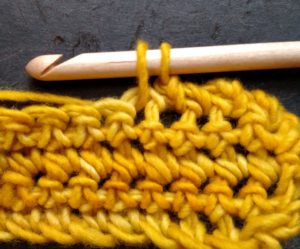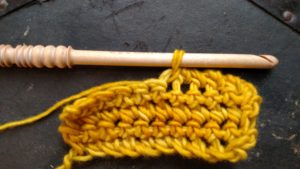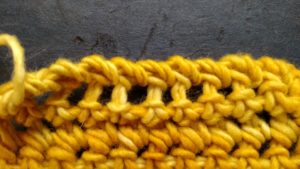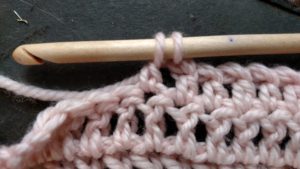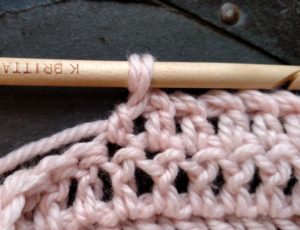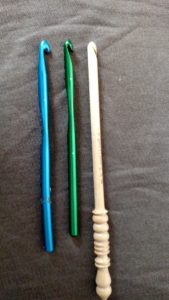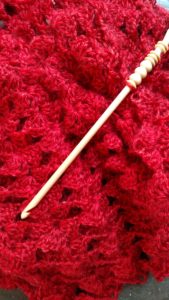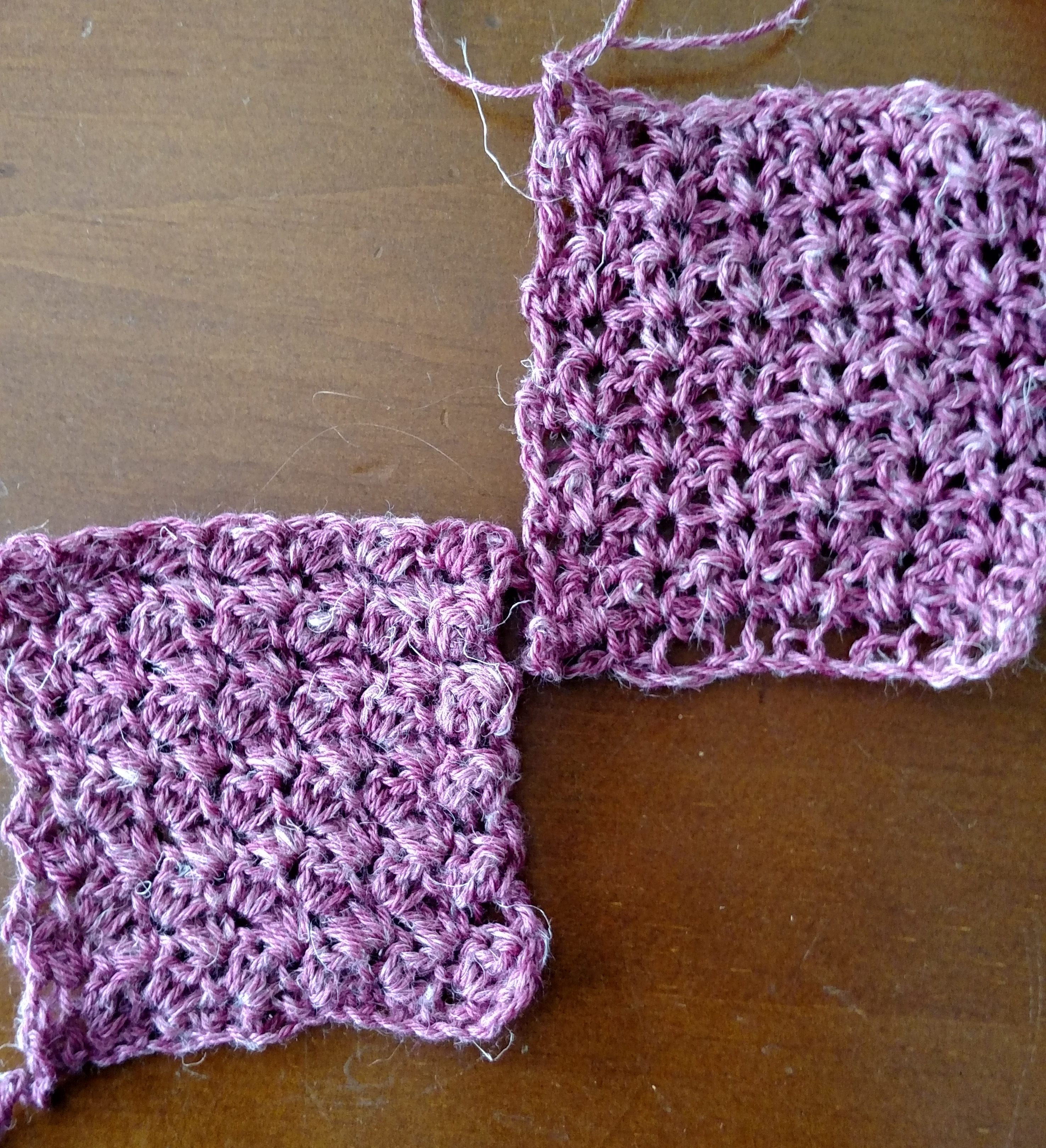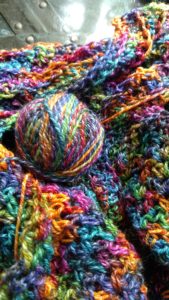 Thank you for joining me for my Moogly CAL Square! As a time of year of giving thanks, I am very thankful to be invited to participate in the project, and I hope you enjoy my contribution as the last square for the year.
Thank you for joining me for my Moogly CAL Square! As a time of year of giving thanks, I am very thankful to be invited to participate in the project, and I hope you enjoy my contribution as the last square for the year.
If you are unfamiliar with The Moogly Yearly Afghan CAL, you can learn more about this project, learning a new 12″ square every 2 weeks, here at Mooglyblog.com.
I tend to like a little different angle in my squares, hence to rotation to create a diamond in the center. This square changes colors every round, but you can create it in many different color configurations. As for the name of this square, Deborah is a long time student, and supporter of my crochet career. She makes a point of sharing her love of baking with all the other students at the weekly crochet classes I teach at my local yarn store, and is always encouraging to everyone. So the name is another sign of thanks.
Deborah’s Diamond Square by: Linda Dean
Small Shells create a center diamond that is framed in color, having a modern feel with classic charm.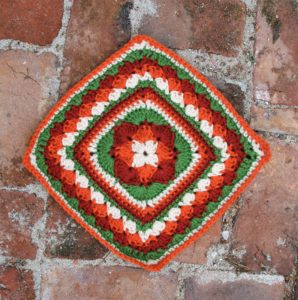
Finished Size: 12”x 12”
Materials List:
- J/10/6.00mm size crochet hook
- Lion Brand Vanna’s Choice medium weight 100% Acrylic yarn (3.5oz/100g/170yds): 1 skein each color: (A) #123 Beige, (B) #134 Terracotta, (C) #133 Brick, (D) #172 Kelly Green
- Tapestry needle
Abbreviations:
ch: chain
dc: double crochet
hdc: half double crochet
sk: skip
sp(s): space(s)
st(s): stitch(es)
YO: yarn over
Rnd 1: With color A, ch 4, sl st to first ch forming a ring, ch 2 (counts as hdc), 2 dc in ring, hdc in ring, [hdc, 2 dc, hdc] in ring three times, sl st to join, fasten off. -8 hdc, 8 dc
Rnd 2: With color B join to last st of Round 1, ch 3 (counts as dc) 5 dc in same st as join, sk 1 st, sc in next dc, sk 1 st, [6 dc in next hdc, sk 1 st, sc in next dc] three times, sl st to join, fasten off. – 4 sc, 24 dc
Rnd 3: With color C, join to any sc, ch 3 (counts as dc), 10 dc in the same st, sk 2 dc, sc in next 2 dc sts, sk next 2 dc, [11 dc in next sc, sk 2 dc, sc in next 2 dc, sk next 2 dc] three times, sl st to join, fasten off. -8 sc, 44 dc
Rnd 4: With color D, join to last st of Round 3, ch 3 (counts as dc), 5 dc in same st as ch, 6 dc in next sc, sk 4 sts, sc in next st, ch 1, sk 1 st, sc in next st, [6 dc in next 2 sc, sk 4 sts, sc in next st, ch 1, sk 1 st, sc in next st] three times, sl st to second to the last st join, fasten off. -8sc, 48 dc
Rnd 5: With color A join in any ch-1 sp, ch 1, sc in same sp, sc in next 6 sts, [hdc in next st, ch 1, hdc in next st, sc in next 13 sts] three times, hdc in next st, ch 1, hdc in next st, sc in remaining 6 sts, sl st to join, fasten off. – 52 sc, 8 hdc
Rnd 6: With color B, join in any ch-1 sp, ch 3 (counts as hdc and ch 1), hdc in same sp, sc in each st across to ch-1 sp, [(hdc, ch 1, hdc) in next ch-1 sp, sc in each st across] three times, sl st to join, fasten off. –60 sc, 8 hdc
Rnd 7: With color C, join in any ch-1 sp, ch 3 (counts as hdc and ch 1), hdc in same sp, sc in each st across to ch-1 sp, [(hdc, ch 1, hdc) in next ch-1 sp, sc in each st across] three times, sl st to join, fasten off. –68 sc, 8 hdc
Rnd 8: With color D, join in any ch-1 sp, ch 3 (counts as hdc and ch 1), hdc in same sp, sc in each st across to ch-1 sp, [(hdc, ch 1, hdc) in next ch-1 sp, sc in each st across] three times, sl st to join, fasten off. –76 sc, 8 hdc
Rnd 9: With color A, join to any ch-1 sp, (sc, ch 1, sc) in same sp, sk hdc, [sk 1 st, 3 dc in next st, sk 1 st, sc in next st] five times, *(sc, ch 1, sc) in ch-1 sp, sk hdc, [sk 1 st, 3 dc in next st, sk 1 st, sc in next st] five times; rep from * around, sl st to join, fasten off. – 28 sc, 60 dc
Rnd 10: With color B, join to any ch-1 sp, ch 3 (counts as hdc and ch 1), hdc in same sp, sk sc and 1 dc, sc in next dc, 3 dc in next sc, [sk 1 dc, sc in next dc, 3 dc in next sc] across to ch-1 sp, *(hdc, ch 1, hdc) in ch-1 sp, sk sc and 1 dc, sc in next dc, 3 dc in next sc, [ sk 1 dc, sc in next dc, 3 dc in next sc] across to ch-1 sp; rep from * around, sl st to join, fasten off. -8 hdc, 28 sc, 60 dc
Rnd 11: With color C, join to any ch-1 sp, ch 4 (counts as dc and ch 1), dc in same sp, hdc in next hdc, [3 dc in next sc, sk 1 dc, sc in next dc] across, hdc in hdc *(dc, ch 1, dc) in ch-1 sp, hdc in next hdc, [3 dc in next sc, sk 1 dc, sc in next dc] across, hdc in hdc; rep from * around, sl st to join, fasten off. -8 hdc, 20 sc, 68 dc
Rnd 12: With color D, join to any ch-1 sp, ch 4 (counts as dc and ch 1) dc in same sp, hdc in next dc, hdc in next hdc, [sk 1 dc, sc in next dc, 3 dc in next sc] across, hdc in next hdc, hdc in next dc, *(dc, ch 1, dc) in ch-1 sp, hdc in next dc, hdc in next hdc, [sk 1 dc, sc in next dc, 3 dc in next sc] across, hdc in next hdc, hdc in next dc; rep from * around, sl st to join, fasten off. – 16 hdc, 20 sc, 68 dc
Rnd 13: With Color A, join to any ch-1 sp, ch 3 (counts as hdc and ch 1), hdc in same sp, sc in each st across, *(hdc, ch 1, hdc) in ch-1 sp, sc in each st across; rep from * around, sl st to join, fasten off. – 8 hdc, 104 sc
Rnd 14: With Color B, join ot any ch-1 sp, ch 3 (counts as hdc and ch 1) sc in each st across, *(hdc, ch 1, hdc) in ch-1 sp, sc in each st across; rep from * around, sl st to join, fasten off. -8 hdc, 112 sc
Weave in ends, block if desired.

